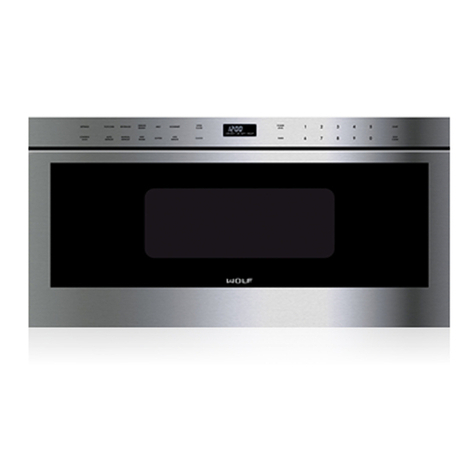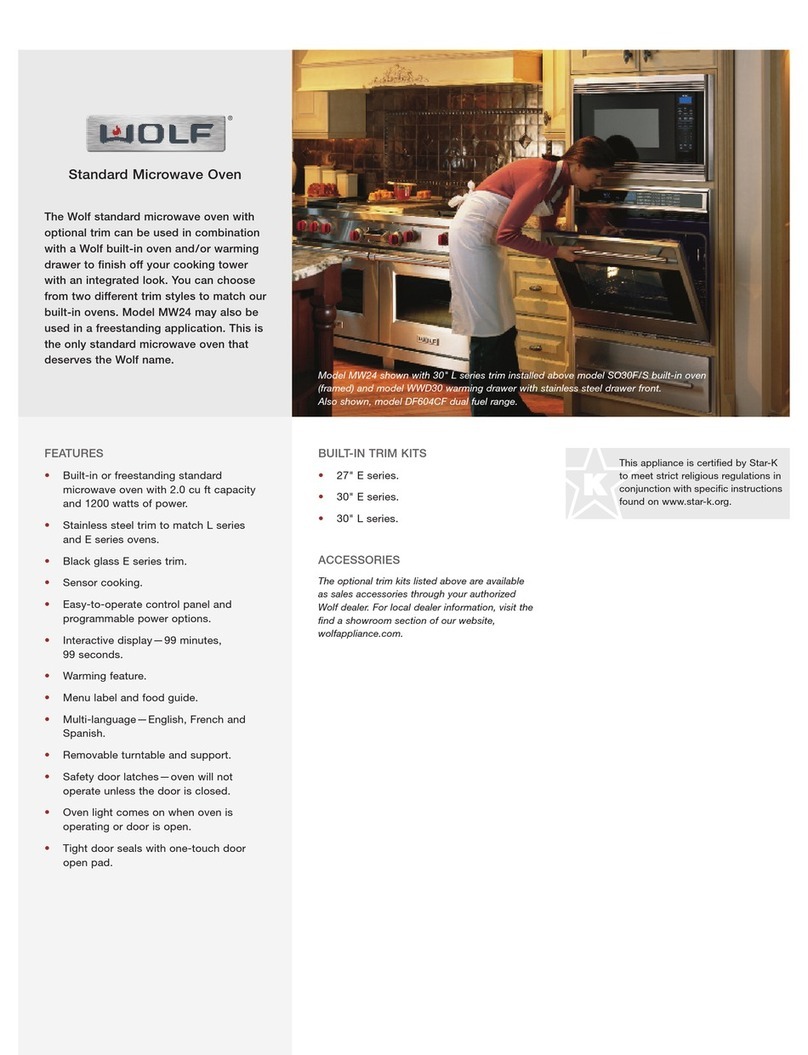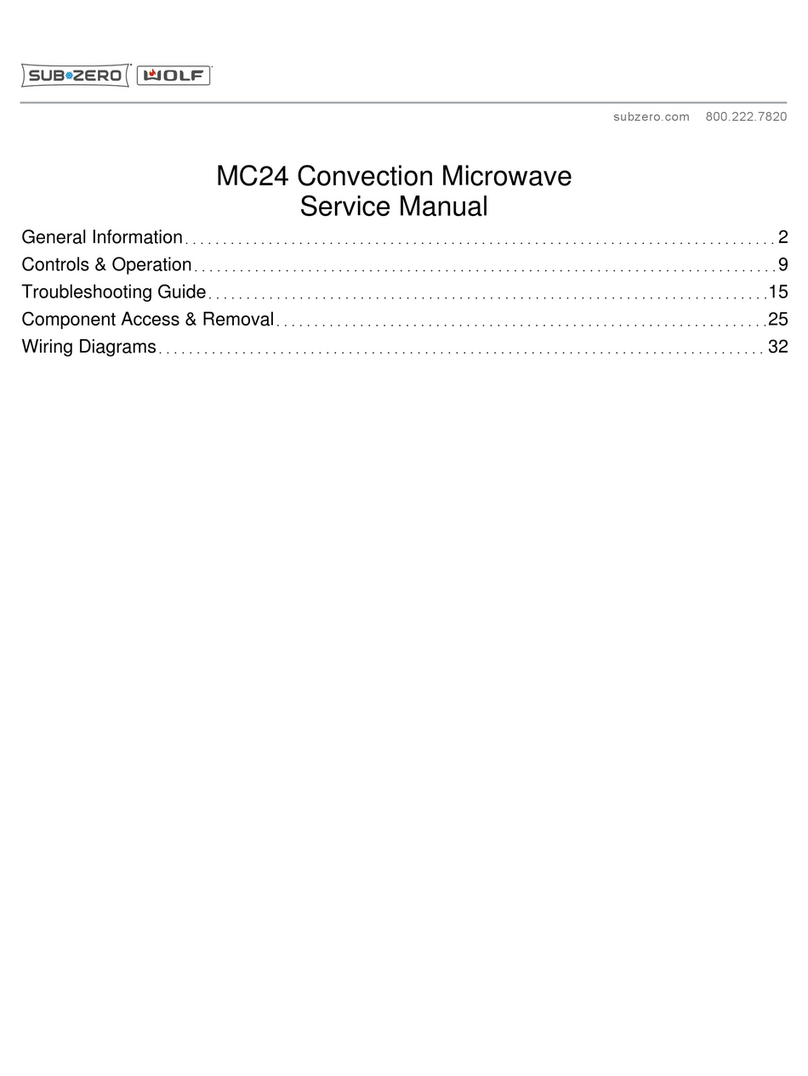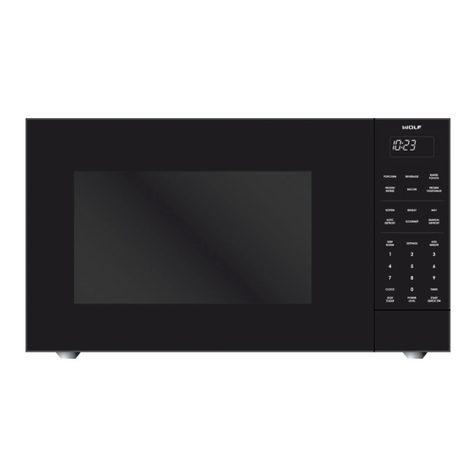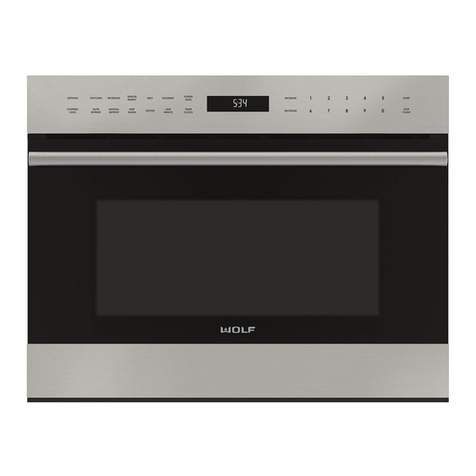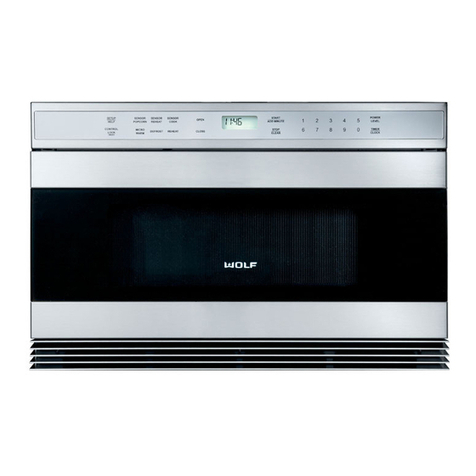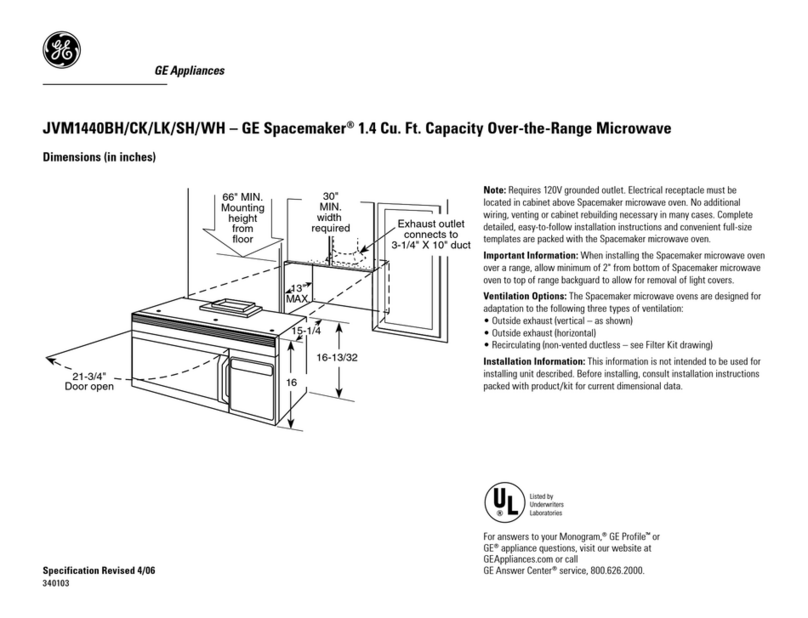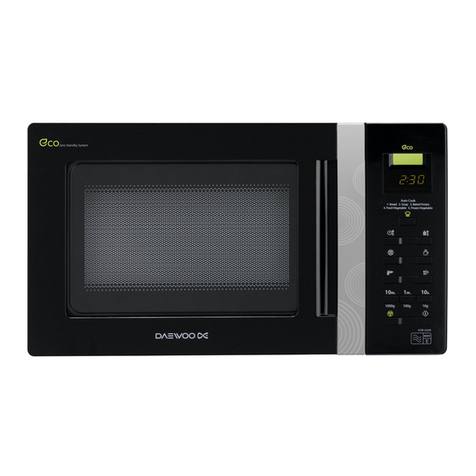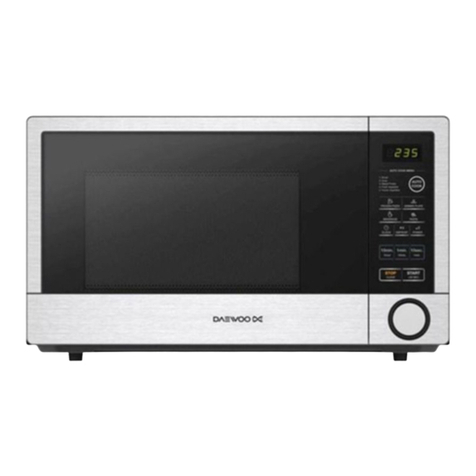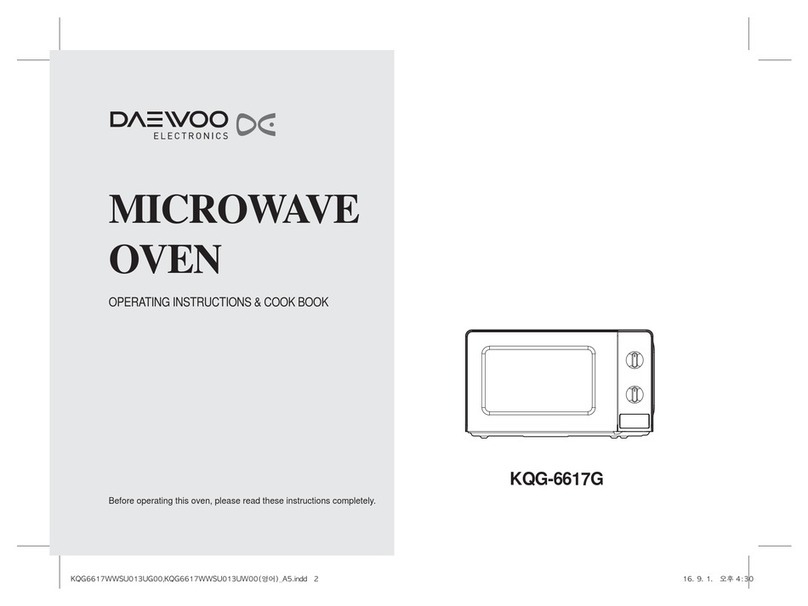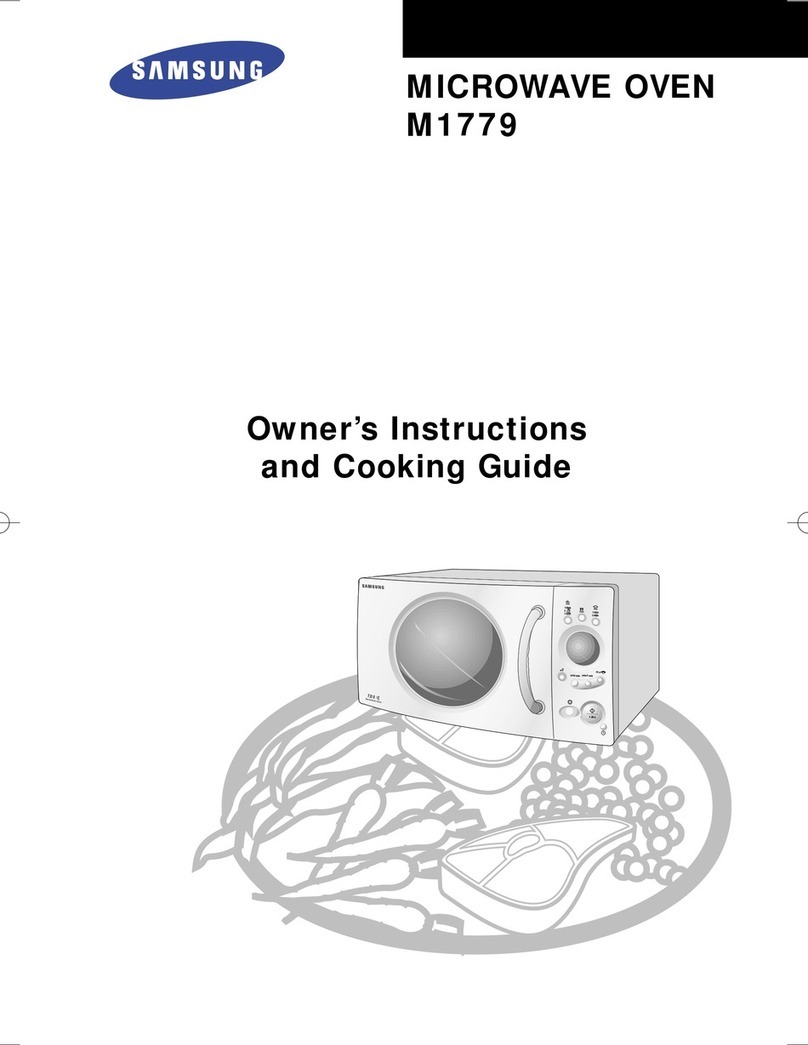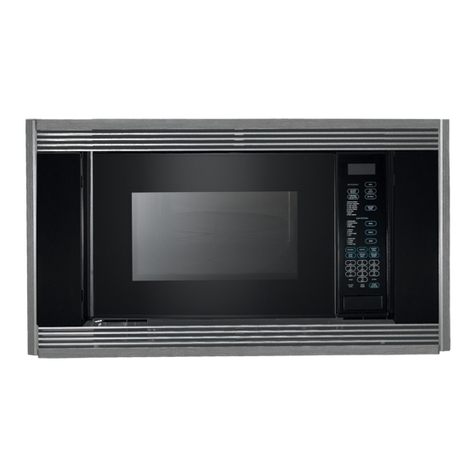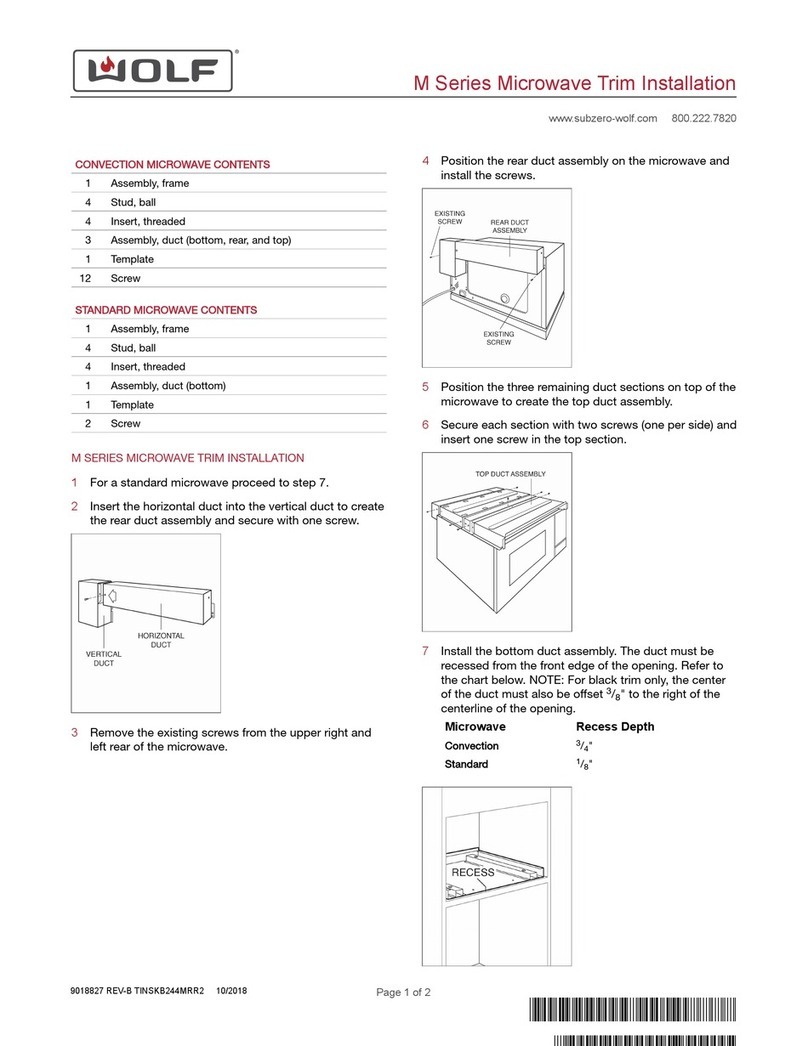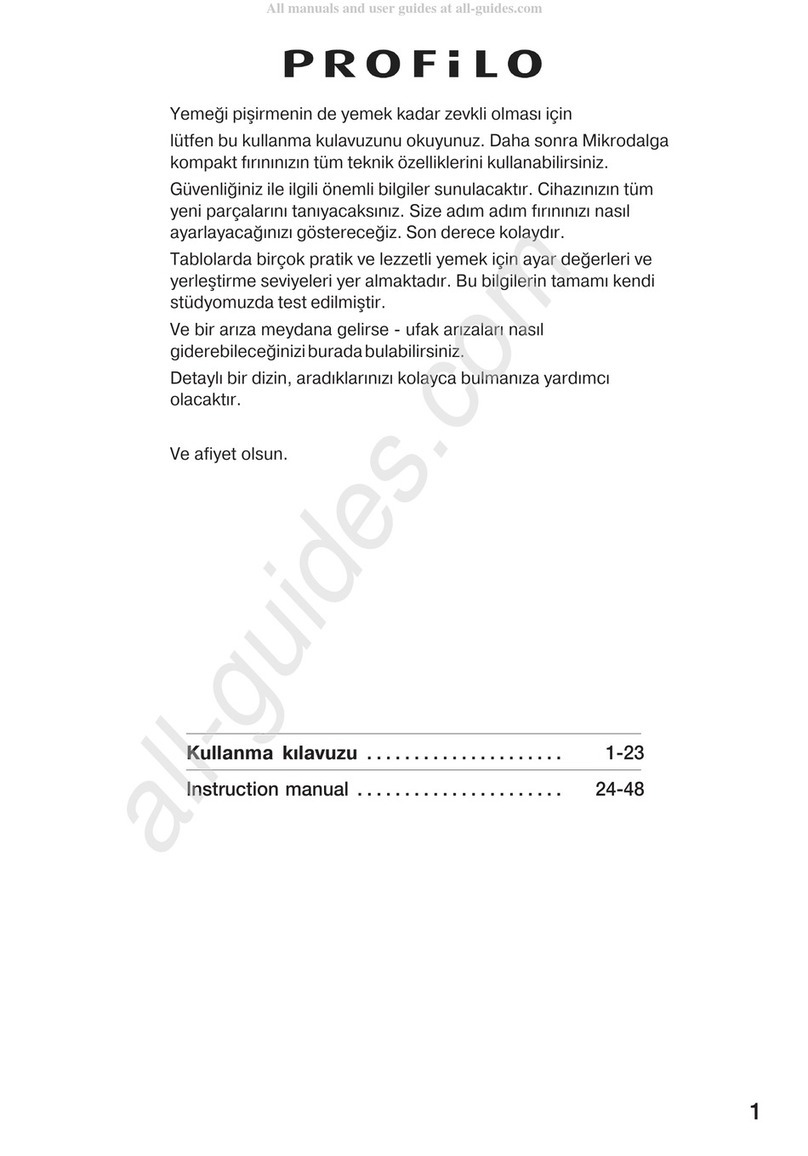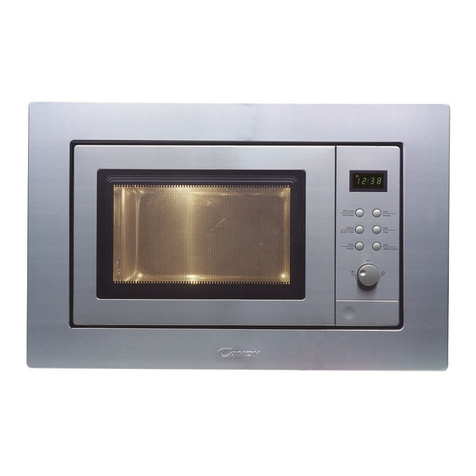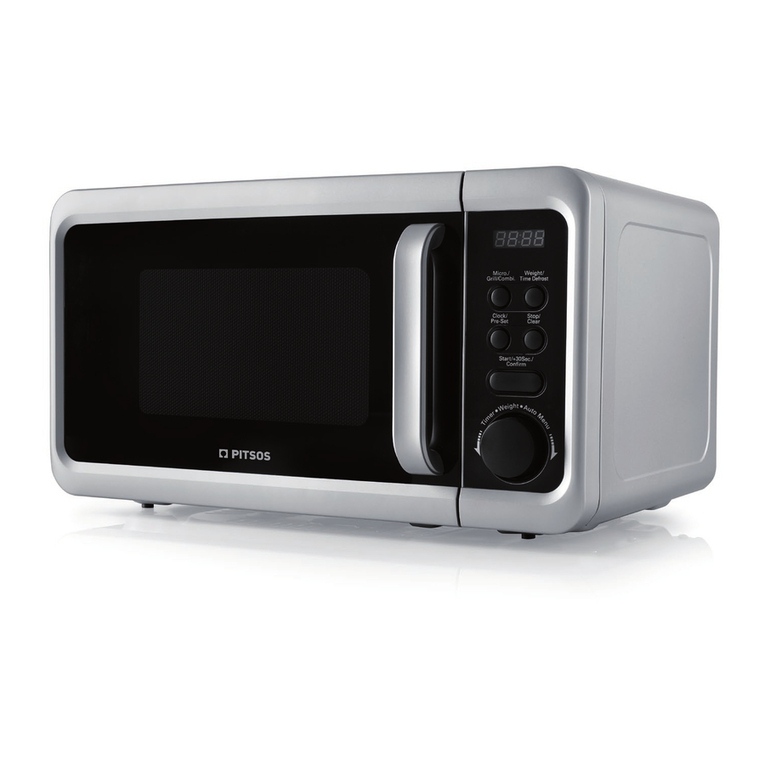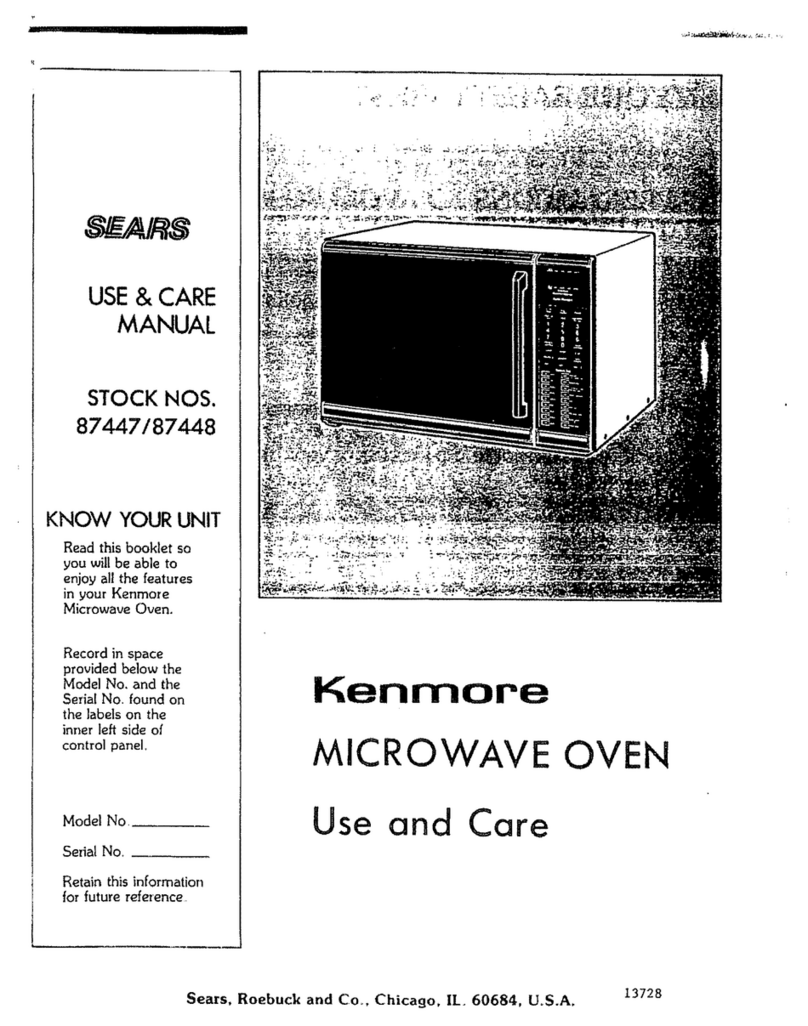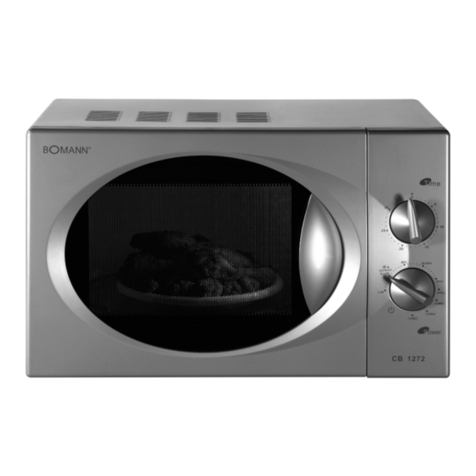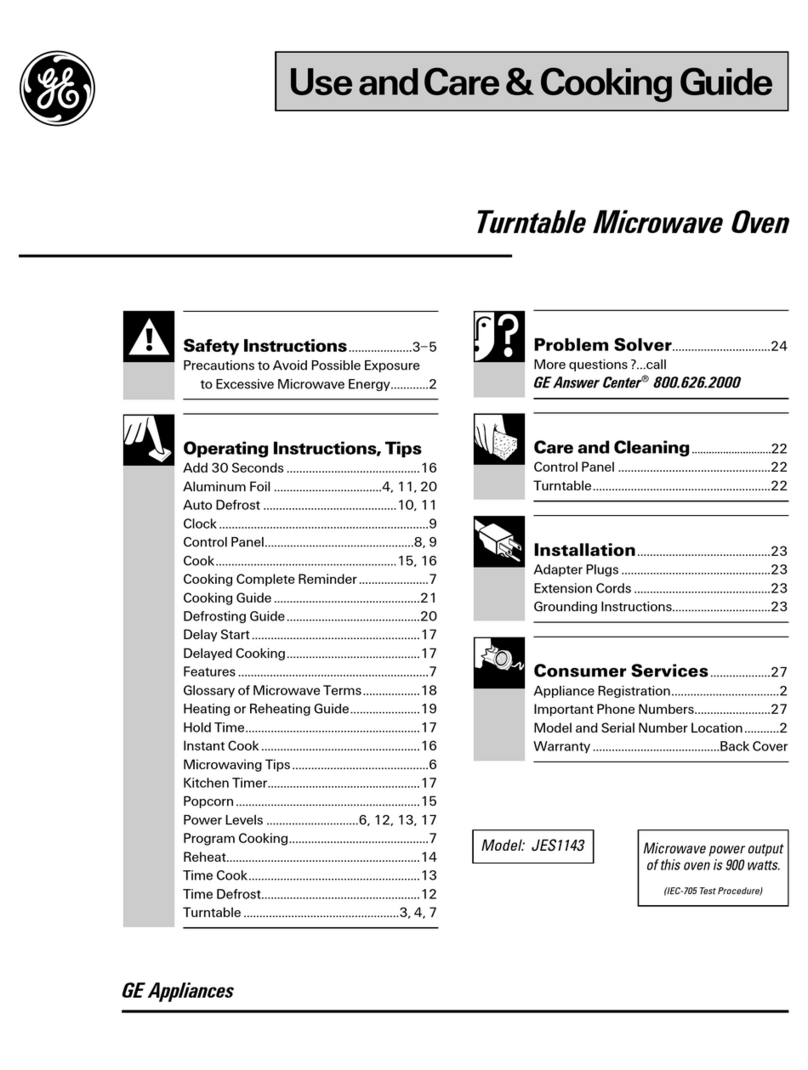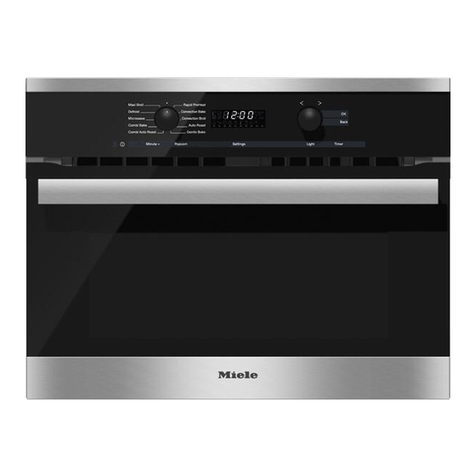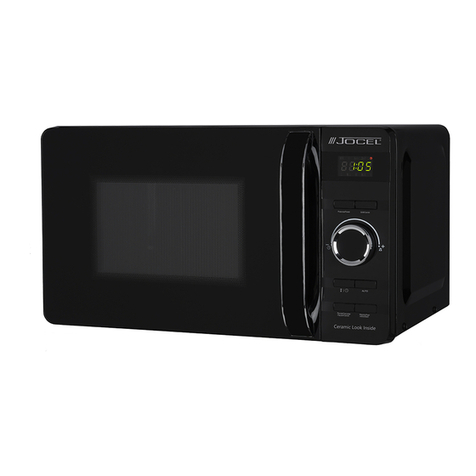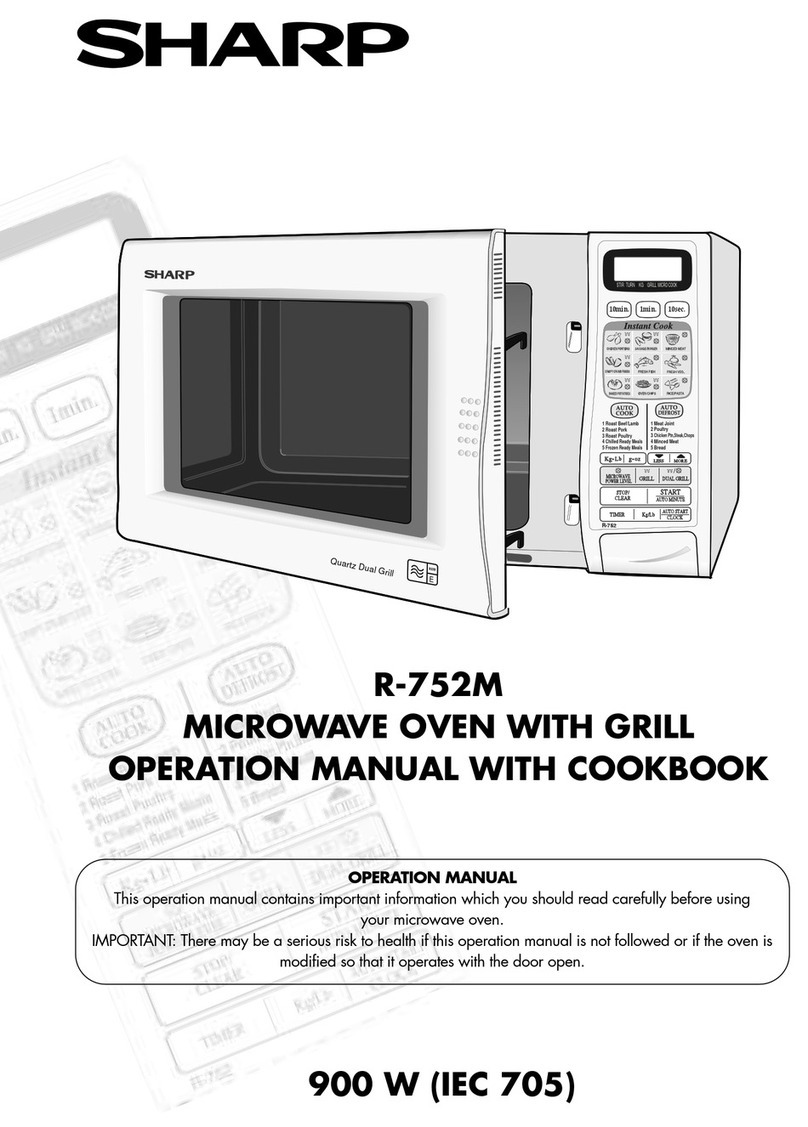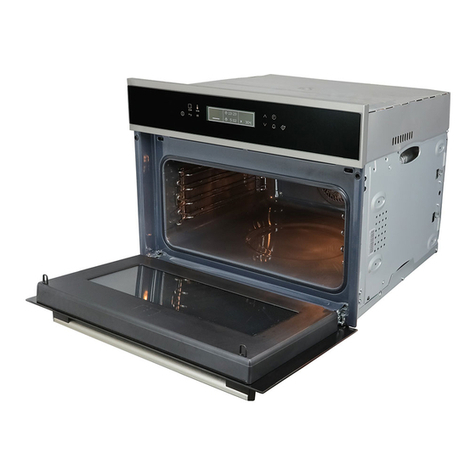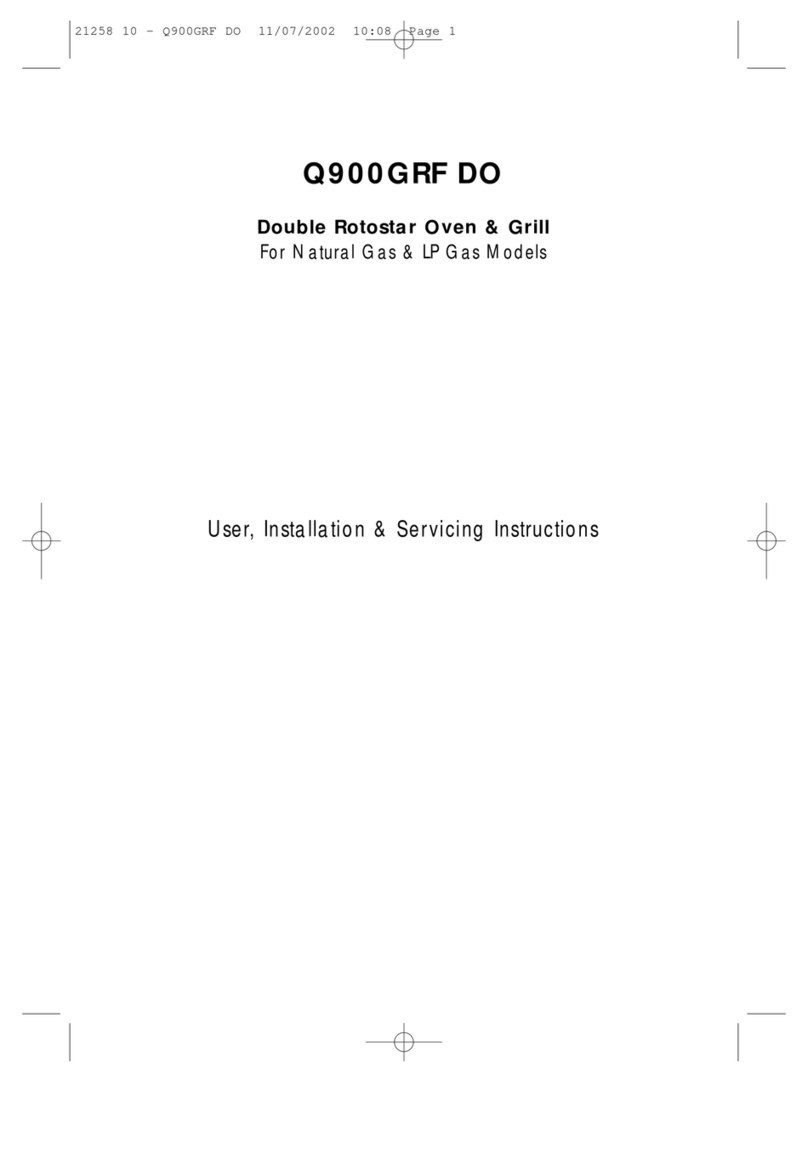Drawer Microwave (Models MWD24-2 / MWD30-2)
Troubleshooting Guide
5-4
#813632 - Revision B - December, 2009
TOUCH CONTROL PANEL ASSEMBLY TEST:
The touch control panel consists of circuits including semiconductors such as LSI,
ICs, etc. Therefore, unlike conventional microwave ovens, proper maintenance
cannot be performed with only a voltmeter and ohmmeter.
In this service manual, the touch control panel assembly is divided into three
units, Control Unit, Keyboard Unit and Power Unit, and troubleshooting by unit
replacement is described according to the symptoms indicated.
Before Testing:
1. Disconnect power supply cord, and then disassemble as per “Drawer
Microwave Disassembly” Section 4 Component Access Removal, Page 4-6.
2. Open the drawer and block it open.
3. Discharge high voltage capacitor.
4. Disconnect the leads to the primary of the power transformer.
5. Ensure that these leads remain isolated from other components and oven
chassis by using insulation tape.
Keyboard Unit:
1. Check Keyboard unit connection before replacement.
2. Reconnect all leads removed from components during testing.
3. Re-install the covers.
4. Reconnect the power supply cord after the covers are installed.
5. Run the oven and check all functions.
The following symptoms indicate a defective keyboard unit:
• When touching the pads, a certain pad produces no signal at all.
• When touching a number pad, two figures or more are displayed.
• When touching the pads, sometimes a pad produces no signal.
If The Keyboard Unit is Defective:
1. Disconnect the power supply cord, and then remove covers.
2. Open the drawer and block it open.
3. Discharge high voltage capacitor.
4. Replace the Keyboard unit.
5. Reconnect all leads removed from components during testing.
6. Re-install the covers.
7. Reconnect the power supply cord after the covers are installed.
8. Run the oven and check all functions.
Control Unit:
The following symptoms indicate a defective control unit. Before replacing the
control unit, perform the Keyboard unit test (Procedure B) to determine if control
unit is faulty.
1. In connection with indicators
• At a certain digit, all or some segments do not light up.
• At a certain digit, brightness is low.
• Only one indicator does not light.
• The corresponding segments of all digits do not light up; or they continue
to light up.
• Wrong figure appears.
• A certain group of indicators do not light up.
• The figure of all digits flicker.
2. Other possible problems caused by defective control unit.
• Buzzer does not sound or continues to sound.
• Clock does not operate properly.
• Cooking is not possible.
COMPONENT TEST
TEST PROCEDURES
PROCEDURE LETTER
A
(This Section continues on the next page)
